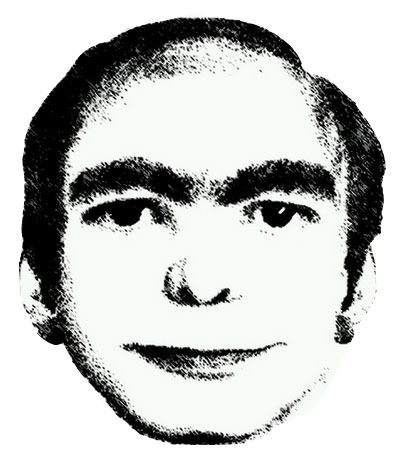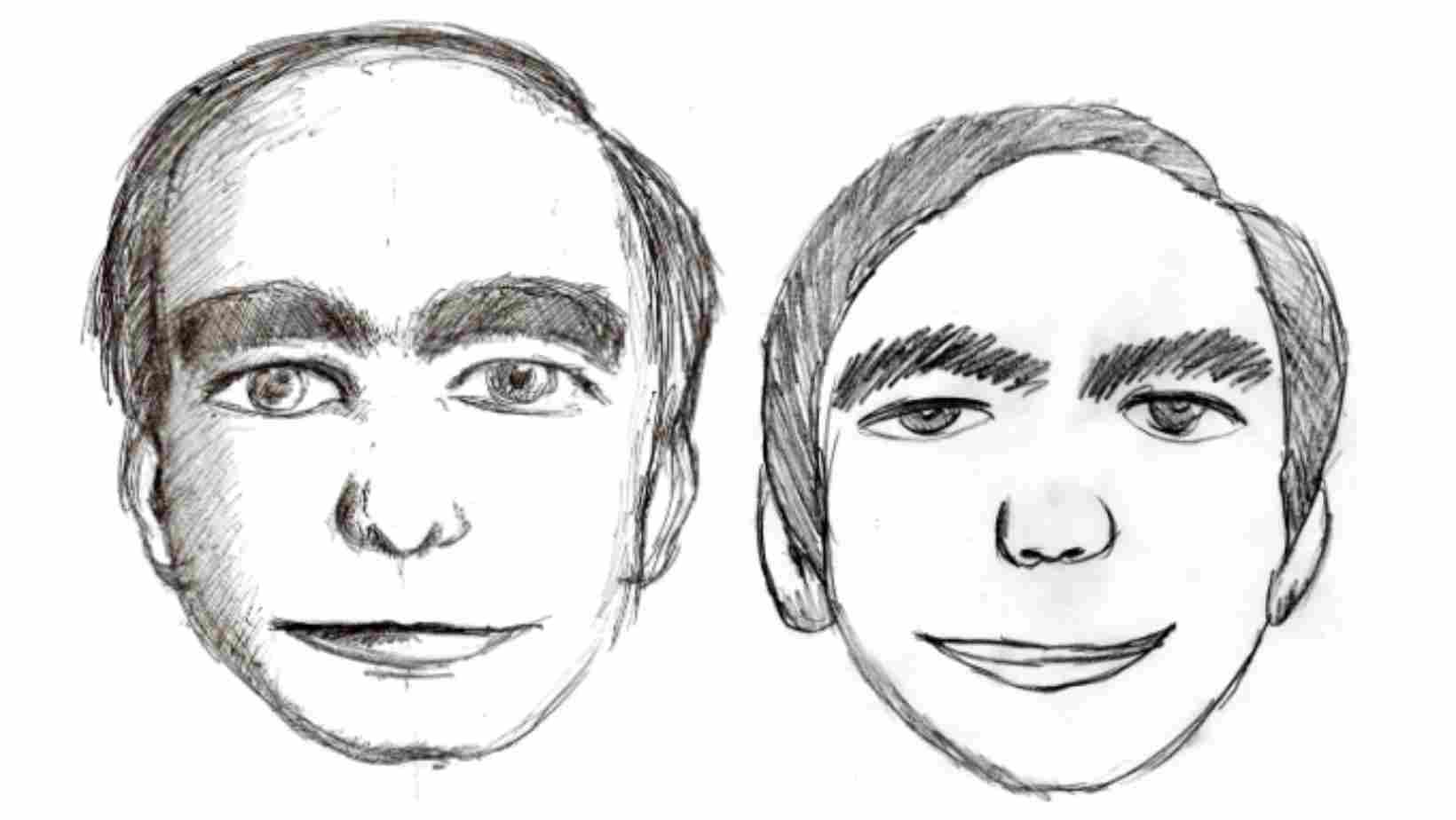Ever Dream This Man? | World of Lucid Dreaming
Every night throughout the world, hundreds of people dream about this face." - ThisMan.org

The legend of This Man begins in a psychiatrist's office in New York. One of the patients drew the face of a man that had been repeatedly appearing in her dreams. He even spoke to her, giving her advice on her private life, yet she insisted she'd never seen the dream man in real life.

Ever Dream This Man?
The dream man portrait sat on the psychiatrist's desk for several days until another patient said he recognized the face. He claimed that This Man also visited him in his dreams. Curious about this coincidence, the psychiatrist circulated the image among his other patients and, so the legend goes, discovered four more people who regularly dreamed of This Man.
"I have always had this dream of flying in the sky over my city and observing my friends from up there. Since I moved to another house I started meeting this man while flying. Not every single time that I have this dream about flying, but often enough. He flies too, but he never speaks.."
The portrait was spread in cities all around the world, from Los Angeles to Rome, from Auckland to Buenos Aires. Soon, countless people claimed to see this man in their dreams.

This Man in Berlin (left) and Los Angeles (right), accompanied with the text:
Have You Dreamed This Man?
He was frequently described as a benevolent dream character who returned again and again to share dream experiences, dispense advice, and trigger dreamers to have waking epiphanies.
"I fell in love with him from the very first time I saw him in my dream. Even though, if I think about it, I must admit he's really ugly. And yet each and every time, he sweeps me off my feet with his romantic gestures and sweet words. He buys me flowers, jewelry, he takes me out to dinner, or to the beach to watch the sunset."

"The first time I had a dream about this man I was having a hard time at work. I had a dream about getting lost in a huge and deserted shopping mall. Suddenly this man appeared and I started running away from him. He chased after me for what seemed like an hour until I found myself against a wall in the kids area in a supermarket. At this point he smiled at me and he showed me the way out towards the cash desks and I woke up. Ever since that night this man has appeared in all of my dreams and he always gives me directions to get out of the dream and wake up."
Theories of This Man
#1. This Man is an Archetype
Carl Jung's psychoanalytic theory suggests that This Man is a universal dream archetype. Jung knew that dreams ultimately come from the unconscious mind, which is seeded by both individual and universal experiences. It's only natural that we might develop similar dream characters, based on shared experiences of movies, memes, and mainstream media.
If true, This Man could stem from the collective unconscious. And he could take the form of any one of Jung's archetypes; namely, the Self, the Shadow, the Animus, or the Persona. Dream archetypes are especially likely to appear in "grand dreams", which Jung saw as deeply transformative experiences that help to fully integrate the self.
"I dreamt this man... was Brazilian and very handsome. He was a schoolteacher type with 6 fingers on his right hand. He said if the US had a nuclear disaster: go North!"
#2. This Man is a Dream Surfer
Some people are convinced that This Man is a real person who can enter our dreams via some form of mutual dreaming. Of course, this inspires many questions. What does he want? Is he benevolent? Can he plant ideas in our minds, Inception-style?? Can anyone become a dream surfer?
"I have seen this man in three completely different dreams. He was slightly different from the picture, but I recognized him immediately. He appeared suddenly... His message in all three of my dreams was: 'It's all over.' The differences in the picture and the man in my dreams are: his hair was a little longer in the top; his eyebrows were not as bushy. Other than that, he is identical. I had no fear of him, but I had many questions."
#3. This Man is God
According to some religious dreamers, This Man is the image of the Creator, or at least one of the forms in which God manifests himself. For this reason, they believe the advice he delivers in dreams is to be strictly followed.
The dangers of such a theory are soon apparent. What if This Man tells you to do something bad, like murder your first born? Are you going to follow through? What if it's something legal but otherwise life-changing, like sell your house, move to Italy, and become a priest? Can we trust such dreams?
Incidentally, if you dream of This Man tonight and he does urge you to commit murder, don't assume it's God talking. Just blame it on me.
#4. This Man is a Real Memory
Now that you've heard of This Man, is he going to appear in your dreams? It's certainly possible. The odds increase significantly if you spend a decent amount of time thinking, talking, or writing about the guy as I have today. This is actually a lucid dreaming technique called dream incubation, in which you focus intensively on a particular dream character, setting, concept, or goal, in order to dream about it and become lucid.
It's possible, then, that people only recall dreaming of This Man after they've been exposed to the phenomenon in real life. In other words, it all began with that one therapy patient in New York, and the dream man phenomenon developed progressively by imitation. When people are exposed to the idea, they're moved enough to actually see him in their dreams as a reflection of their waking experience.
#5. This Man is a False Memory
Set This Man aside for one moment. Can you visualize the face of any man who appeared in your dreams in the last year? It's actually quite difficult to remember the faces we see in our dreams, even in lucid dreams.
This is not to discredit any portraits that do arise based on the characters of our dreams. But it offers the explanation that, for many people, This Man is a false memory; a face that we retrospectively attribute to a dream character whose facial details we actually can't recall.
Did you know that around 1 in 50 people can't visualize at all? We're talking daydreams, visual recall, or any sense of sight in the mind's eye. If this sounds like you, you may have aphantasia.
#6. This Man is Andrew Lloyd Webber
Since we're brainstorming all possibilities, let's consider the theory of Andrew Lloyd Webber. You heard it here first. Our dreams are literally being invaded by the British composer and impresario of musical theater. What exactly is he doing in the dreamworld? How is he doing it? And are we to assume this is how he got the inspiration for Cats?

Have you dreamed This Man?
The Truth About This Man
While it was fun exploring the possible explanations for This Man, it turns out that this whole adventure was, sadly, a hoax. Sorry about that. But don't throw your screen at me just yet. The psychology of the hoax is really cool in itself.
This Man was actually created by marketing strategist, Andrea Natella, founder of Italy's first unconventional communications firm, Guerilla Marketing. Its entire modus operandi is to design subversive hoaxes to drum up public interest for commercial products.
In 2010, it was exposed that Guerilla Marketing owned the website ThisMan.org, and supplied a great deal of the mythology, images, and quotes on the subject. Public interest and media mentions took care of the rest.
After This Man went viral, the website was purchased by the horror movie production company, Ghost House Pictures (The Grudge, Drag Me To Hell, Poltergeist). The screenwriter, Bryan Bertino, created a story in which “an ordinary guy discovers that people he has never met are seeing him in their dreams. Now he must find out why he is the source of nightmares for strangers all over the world.”
The hoax would have given the movie fantastic exposure, had it not been canceled before it was even cast. Interestingly, the creators had no interest in keeping the hoax going for the movie, but wanted to explore the idea in a dark and possibly comic way.
Anatomy of a Hoax
This Man is a cool hoax because it taps into that rabbit hole of intrigue we all love: dreams. But it also exploits an optical illusion that turns This Man into Every Man. Take a close look at the original portrait of the guy. Do you notice anything particularly strange about this face?

This Man is Every Man?
Cover up one side of his face with your hand. On the left, his hair is fuller; on the right it's thinner; and in the middle he's even balding.
The same effect applies to his eyes, lips, and nose. On the left, his eye is hooded, lips are full, and his nose is big; on the right, the eye is shallower, the lips thin out, and the nose disappears altogether. We unconsciously forgive this, having seen similar artifacts in faxed or poorly printed images.
Indeed, the stippling effect allows us to subjectively choose the size of the ear lobes and the strength of the jawline, depending on whether we see shadows or negative space. Forget the fact that virtually no-one would use stippling to sketch a dream man for their psychiatrist. We're just too awed by the story to give it due attention.
This amalgamation of facial features, designed as a kind of catch-all to rouse a sense of familiarity, is what makes This Man work. It allows for a subjective interpretation of This Man, helping him fit many blurry dream character memories if we really want him to. Indeed, the only thing we can definitely say about the man everyone sees in their dreams is that he has really huge eyebrows.
Of course, you'll notice there's no color in the portrait, and not one of the dream quotes tells us about This Man's race, eye color, age, height, language, and other identifying features. These were deliberately omitted as recurring inconsistencies would have helped to collapse the hoax.
So, what do you say? Do you ever dream this mean? Almost certainly, yes. He's every man. And if you can't retrofit him into your dreams, hopefully you'll encounter the fellow tonight.
















